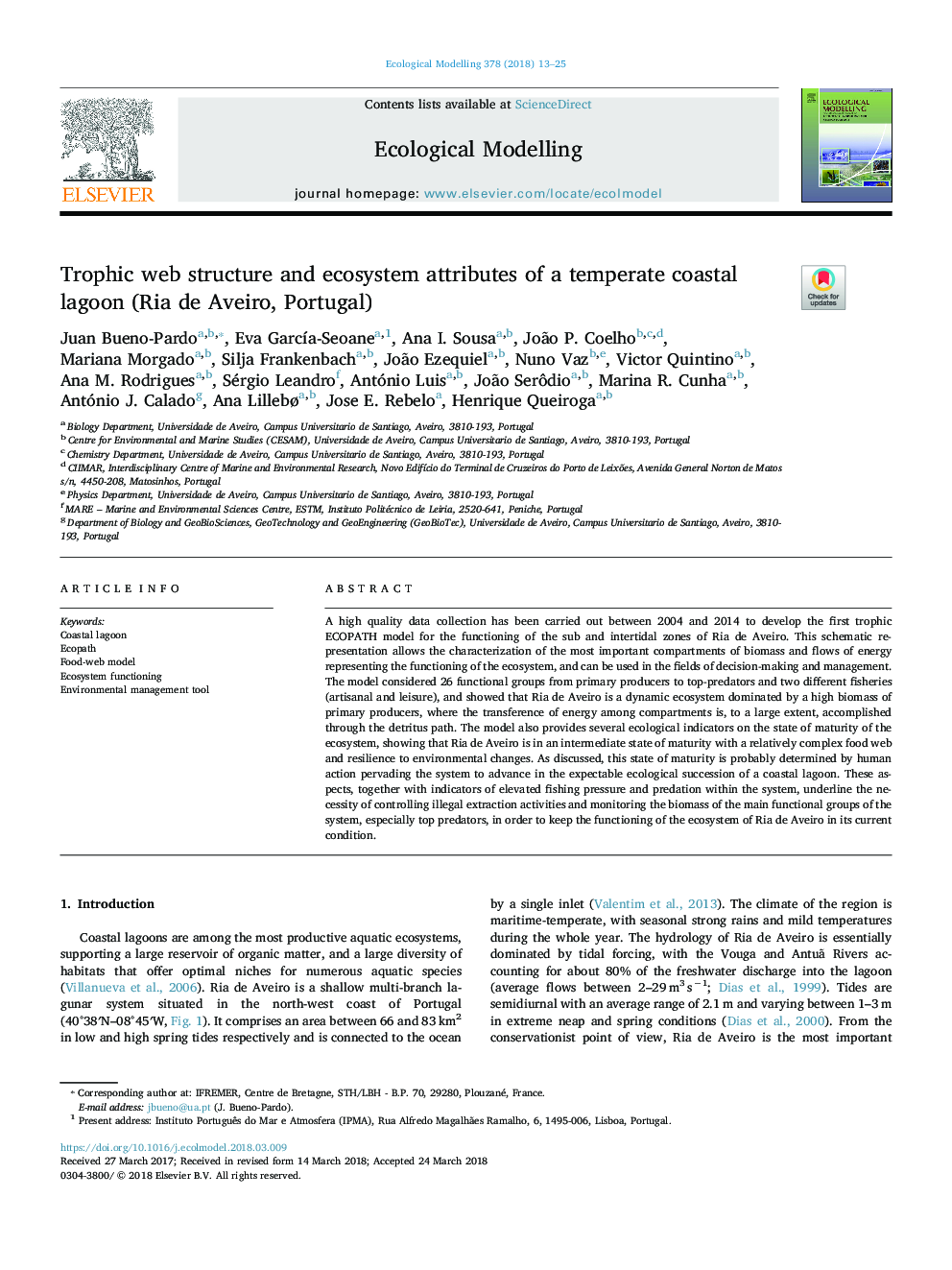| Article ID | Journal | Published Year | Pages | File Type |
|---|---|---|---|---|
| 8846050 | Ecological Modelling | 2018 | 13 Pages |
Abstract
A high quality data collection has been carried out between 2004 and 2014 to develop the first trophic ECOPATH model for the functioning of the sub and intertidal zones of Ria de Aveiro. This schematic representation allows the characterization of the most important compartments of biomass and flows of energy representing the functioning of the ecosystem, and can be used in the fields of decision-making and management. The model considered 26 functional groups from primary producers to top-predators and two different fisheries (artisanal and leisure), and showed that Ria de Aveiro is a dynamic ecosystem dominated by a high biomass of primary producers, where the transference of energy among compartments is, to a large extent, accomplished through the detritus path. The model also provides several ecological indicators on the state of maturity of the ecosystem, showing that Ria de Aveiro is in an intermediate state of maturity with a relatively complex food web and resilience to environmental changes. As discussed, this state of maturity is probably determined by human action pervading the system to advance in the expectable ecological succession of a coastal lagoon. These aspects, together with indicators of elevated fishing pressure and predation within the system, underline the necessity of controlling illegal extraction activities and monitoring the biomass of the main functional groups of the system, especially top predators, in order to keep the functioning of the ecosystem of Ria de Aveiro in its current condition.
Related Topics
Life Sciences
Agricultural and Biological Sciences
Ecology, Evolution, Behavior and Systematics
Authors
Juan Bueno-Pardo, Eva GarcÃa-Seoane, Ana I. Sousa, João P. Coelho, Mariana Morgado, Silja Frankenbach, João Ezequiel, Nuno Vaz, Victor Quintino, Ana M. Rodrigues, Sérgio Leandro, António Luis, João Serôdio, Marina R. Cunha, António J. Calado,
